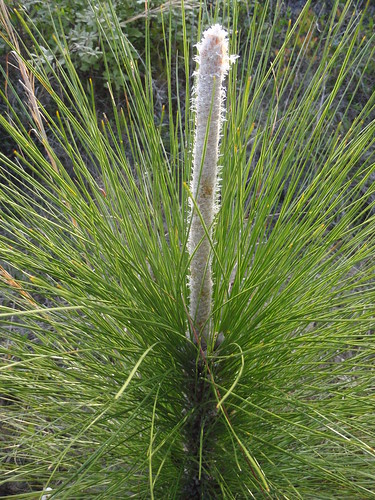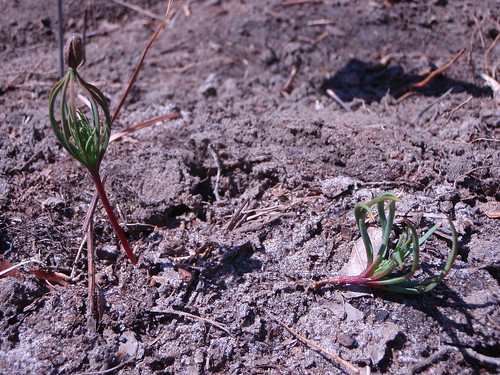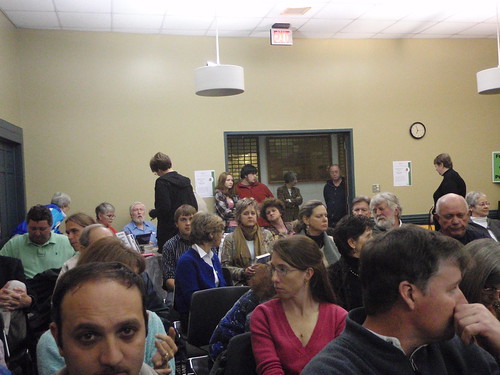This nine foot loblolly is about 3 years old, as you can see since John S. Quarterman can reach 8 feet high and it’s a foot higher than that: Continue reading
Category Archives: Longleaf
Divide and Diminish, or Preserve and Survive?
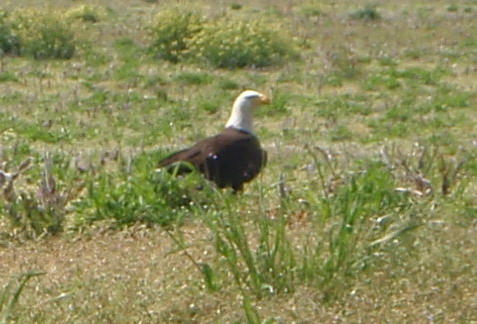 Olivia Judson writes about
Divide and Diminish:
Olivia Judson writes about
Divide and Diminish:
A different process goes on when an island forms by splintering. Here, the ecosystem is pre-existing: the island is created with a set of residents already in place. But it is now too small to support them all.She’s not talking about prescribed forest burns, which are actually necessary for longleaf pine forest ecology. She’s talking about burns that destroy forests.What happens next is a kind of unraveling, a fraying, a disassembling such that the ecosystem becomes simpler, so as to fit the space that is now available. On those recently-created islands of Indonesia, for example, the smallest islands are home to many fewer species than the largest islands. And, as you’d expect, you don’t find big animals on the smallest islands either.
When we humans burn tracts of forest, or make islands in some similar way, the immediate impacts depend on a suite of factors, including how many islands there are, how big they are, and how close they are together. It also matters what is between them. Fields may be more hospitable to wildlife than roads or water; under some circumstances, life forms may be able to flit from one fragment to another, and the “island” nature of the fragments will be reduced. Perhaps we can use such patterns to shape how we use land, to try and minimize the impact we have.
Perhaps.
The once-mighty longleaf pine ecology that spread from eastern Virginia to east Texas now only exists in tiny islands separated by cities, fields, and roads. Maybe we should preserve the few patches that are left. This isn’t just about plants and animals, you know, it’s also about flood control, food supply, and living conditions.
Half a century ago we overused pesticides, in particular DDT, which caused birds’ eggs to become too fragile. Bald eagles vanished from many places. But sometimes they come back, when we stop poisoning them and instead save some habitat.
The eagle pictured was just sitting beside the road as we drove by. There are more in nearby counties. Picture by Gretchen Quarterman, 23 March 2010.
Making Forests Pay While Benefiting Everybody
 The state of Georgia already finances a
Conservation Reserve Program (CRP)
to plant longleaf pines with
associated native ground cover (partridge pea that the quail like,
and bunch grasses such as wiregrass that help fuel periodic fires).
The state of Georgia already finances a
Conservation Reserve Program (CRP)
to plant longleaf pines with
associated native ground cover (partridge pea that the quail like,
and bunch grasses such as wiregrass that help fuel periodic fires).
However, CRP payments typically only last 10 years and not more than 15 years, and such trees usually eventually get cut for sawtimber or pulpwood. Now that’s better than cotton: much less pollution involved and far more carbon sequestered.
But even better would be to treat such replanting as real reforestration and sell carbon sequestration rights for such forests. Like what is being planned in Florida: Continue reading
Reforestation for Profit
 Nor does any of this have to adversely affect the Georgia lumber industry.
It’s well established that the currently popular method of clearcutting
isn’t the only way. Pine forests can be managed profitably
via selective logging;
here’s
more about that.
Nor does any of this have to adversely affect the Georgia lumber industry.
It’s well established that the currently popular method of clearcutting
isn’t the only way. Pine forests can be managed profitably
via selective logging;
here’s
more about that.
That permits the forest to remain a forest, with native vegetation, wildlife, hunting, recreation, flood control, etc., all for more forests than we have now.
Plus carbon sequestration credits.
Cotton farmers might like growing trees better under such economic conditions.
All this is shovel-ready for stimulus. There’s no new technolgy to develop for forest planting or management. Just implement carbon-sequestration credits for ongoing sustainability, and perhaps use stimulus funding to speed planting trees.
Seedlings of One Longleaf
Here’s what they look like just after they come up:
It’s a pretty big tree: Continue reading
Sprouting Longleaf
Many people think it takes fire to make longleaf produce seeds. These pictured seedlings came from a tree that hasn’t had fire near it for more than ten years. So why so many seedlings this year? Continue reading
Bolting Longleaf
Moody Forest, home of the Red Cockaded Woodpecker
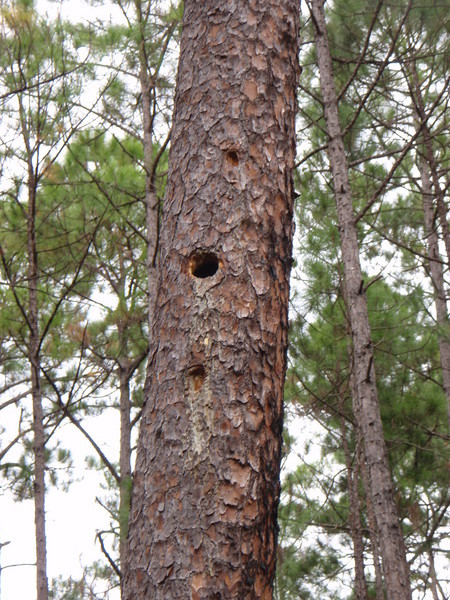 In addition to her popular trilogy of books,
Janisse Ray has also edited a small volume about the
Moody Forest Natural Area,
which was on sale at
her talk in Moultrie the other day.
I can’t find a reference to that book online, although Moody Forest
itself features in Wild Card Quilt.
In addition to her popular trilogy of books,
Janisse Ray has also edited a small volume about the
Moody Forest Natural Area,
which was on sale at
her talk in Moultrie the other day.
I can’t find a reference to that book online, although Moody Forest
itself features in Wild Card Quilt.
However, Gretchen and I did visit Moody Forest in 2008, and took some pictures, like this one on the right that appears to be the home of some rare red-cockaded woodpeckers:
That’s just one picture, but follow this link for the others.
Janisse Ray in Moultrie, 26 Jan 2010
 Janisse Ray
spoke and read from her books in Moultrie last night.
The place was packed with a wide variety of people:
Janisse Ray
spoke and read from her books in Moultrie last night.
The place was packed with a wide variety of people:
Here’s her opening poem: Continue reading
VDT: Quarterman Road project completed
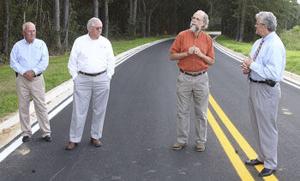 The Valdosta Daily Times caught me working on being tactful.
The Valdosta Daily Times caught me working on being tactful.
Matt Flumerfelt’s writeup actually conflates two different county commission meetings, but gets the gist right:
The fate of the tree canopies lining the rural road were thought to hang in the balance. Several residents spoke in favor of the paving, citing dangerous conditions along the road during periods of stormy weather.Oh, the beaver will be mad. I forgot to mention the beaver.John and Gretchen Quarterman, whose ancestors lent their name to the country lane, led the fight to preserve the road in its original pristine dirt-road condition.
The forest along Quarterman Road is “a scrap of the longleaf fire forest that used to grow from southern Virginia to eastern Texas,” said John Quarterman following the ribbon-cutting ceremony. “This forest has been here since the last ice age.”
Quarterman Road, pre-paving, was the kind of dirt road down which Huckleberry Finn might be envisioned skipping barefoot with a fishing rod projecting over one shoulder.
It was the kind of road near which Thoreau might have planted a cabin.
“Many people don’t know that a longleaf pine forest has more species diversity than anything outside a tropical rain forest,” Quarterman said. “In our woods, we have five species of blueberries, …
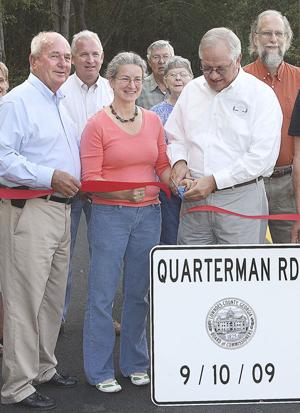 The rest of the story is on the VDT web pages.
More pictures of the event in the previous blog entry.
The rest of the story is on the VDT web pages.
More pictures of the event in the previous blog entry.
For pictures of what lives in the forest, see longleaf burning gopher tortoises, snakes, frogs, bees and butterflies, spiders and scorpion, and raccoon, and beautyberry, pokeberry, passion flower, pond lily, ginger lily, Treat’s rain lily (native only to south Georgia, north Florida, and a bit of Alabama), thistle, sycamore, palmetto, mushrooms, lantana, magnolia, grapes, yellow jessamine, dogwood, and native wild azaleas.
The VDT has a good picture of Gretchen cutting the ribbon.
But it’s not over just because one road project is completed:
“More people around the county seem to be paying attention these days. Commissioners tell us that already another road in the county has had its canopy saved during paving, and the commission has promised residents of Coppage Road that if their road is paved, their canopy will be saved. Commissioners even seem to like the idea of recognizing canopy roads as a feature of quality of life for residents of the county and for visitors.”
We have a forest. The county just has roads.
Now let’s go see what they’re doing to the rest of our roads. And schools, and waste management, and biofuels, and industry…. If you’d like to help, please contact the Lowndes Area Knowledge Exchange.
